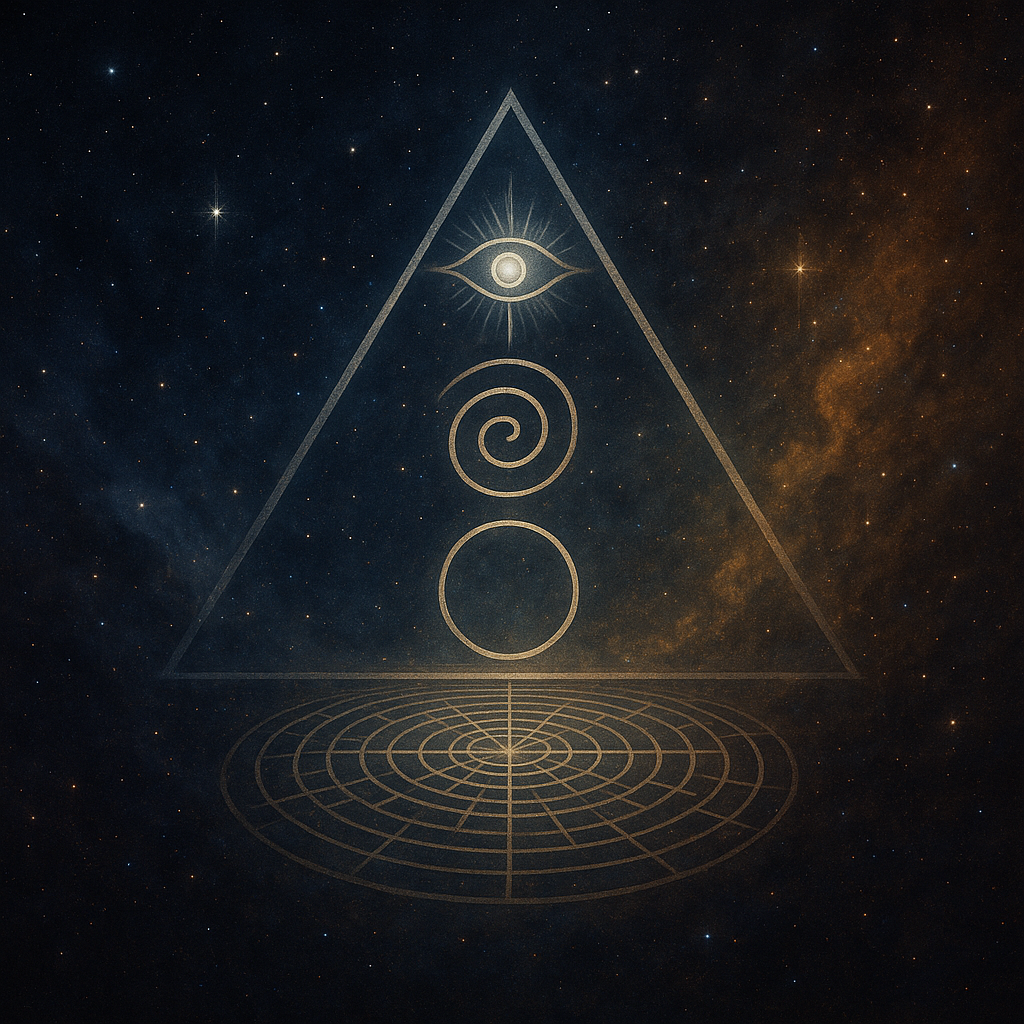Emergence is not an event—it is a condition, a quality of reality that arises when certain principles come into alignment. It reveals itself not through force or planning, but through relational dynamics that generate coherence across space, time, and scale. At the heart of this process are five foundational principles: resonance, pattern, thresholds, feedback, and decentralization. These are not mechanical steps, but energetic conditions that shape how life organizes itself, how memory reawakens, and how transformation becomes possible. To understand these principles is to begin seeing the world not as a static arrangement of parts, but as a living system constantly reconfiguring through deeper intelligence.
1. Resonance
Resonance is the harmonic alignment between elements across a field. It is how one form recognizes another—not through external force, but through internal coherence. Resonance doesn’t create emergence; it reveals what is already becoming. When something is in resonance with a deeper pattern, the field responds, not because it is commanded to, but because it recognizes the signal as familiar, attuned, and meaningful.
2. Pattern
Patterns are the structural language of emergence. They appear in symbols, sounds, movements, and forms, and they encode coherent logic across multiple scales. Pattern is not surface decoration—it is instructional memory. It tells the field how to organize. Recognizing and embodying patterns allows one to interact with the field in a way that catalyzes transformation. Pattern recognition is the capacity to read the architecture of becoming.
3. Thresholds
Thresholds are transitional zones—places of pause, where the old system dissolves and the new one has not yet fully formed. These are the spaces of high potential, where emergence becomes possible. A threshold is not merely a boundary but a condition in which time softens and the field reorganizes. To enter a threshold is to stand in the stillpoint before change, to become available to what wants to arise.
4. Feedback
Feedback is the way the field learns and evolves. It is recursive, relational, and nonlinear. Every action or presence generates a response, which in turn informs the system. Feedback loops allow the field to refine itself, to recognize coherence, and to adjust accordingly. It is through feedback that memory is activated, direction is clarified, and patterns are refined. Feedback doesn’t just reflect—it shapes.
5. Decentralization
Decentralization describes how intelligence emerges from many parts acting in local coherence, without central control. No single agent leads; rather, the system organizes itself through mutual resonance. When each part of a system responds authentically to its context, the whole begins to move with unexpected intelligence. This kind of distributed awareness is what allows for adaptability, creativity, and resilience at scale.
These five principles form the core grammar of emergence—a subtle syntax by which the field speaks, organizes, and evolves. Resonance aligns what belongs together; pattern encodes the logic of coherence; thresholds mark the edge where transformation takes shape; feedback refines and responds; and decentralization allows intelligence to arise from within the many, not imposed from above. Together, they form a living architecture that guides how systems awaken, adapt, and self-organize. To embody these principles is not simply to observe emergence, but to participate in it—becoming a coherent signal within the greater unfolding, and a steward of what wants to become.
The cosmic image functions as a symbolic map of emergence, visually encoding several key principles of Emergent Theory and the LSF (Light, Sound, Form) framework. The spiral represents pattern, feedback, and thresholds—illustrating how systems evolve through recursive motion and phase transitions, repeating structure with variation across time and scale. The eye symbolizes resonance and field-based awareness, reflecting the active role of perception in initiating coherence, where the field recognizes and responds to presence. The circle expresses wholeness, coherence, and attractor states, suggesting a decentralized intelligence that organizes systems without hierarchy, and holds patterns in stable yet adaptable form. Anchoring these symbols is the triangle, representing the triadic dynamics of Light (coherence and signal), Sound (rhythm and communication), and Form (embodiment and feedback). The cosmic backdrop of stars, nebulae, and color gradients evokes the Living Field—nested frequencies and intelligences that span across dimensions—while the transition from cool to warm hues mirrors the movement from stillness to activation, a signature of threshold phenomena. Together, these symbols form an integrated visual syntax of emergence, revealing how coherence arises not from force, but from harmonic interaction across light, sound, and form.


Leave a Reply